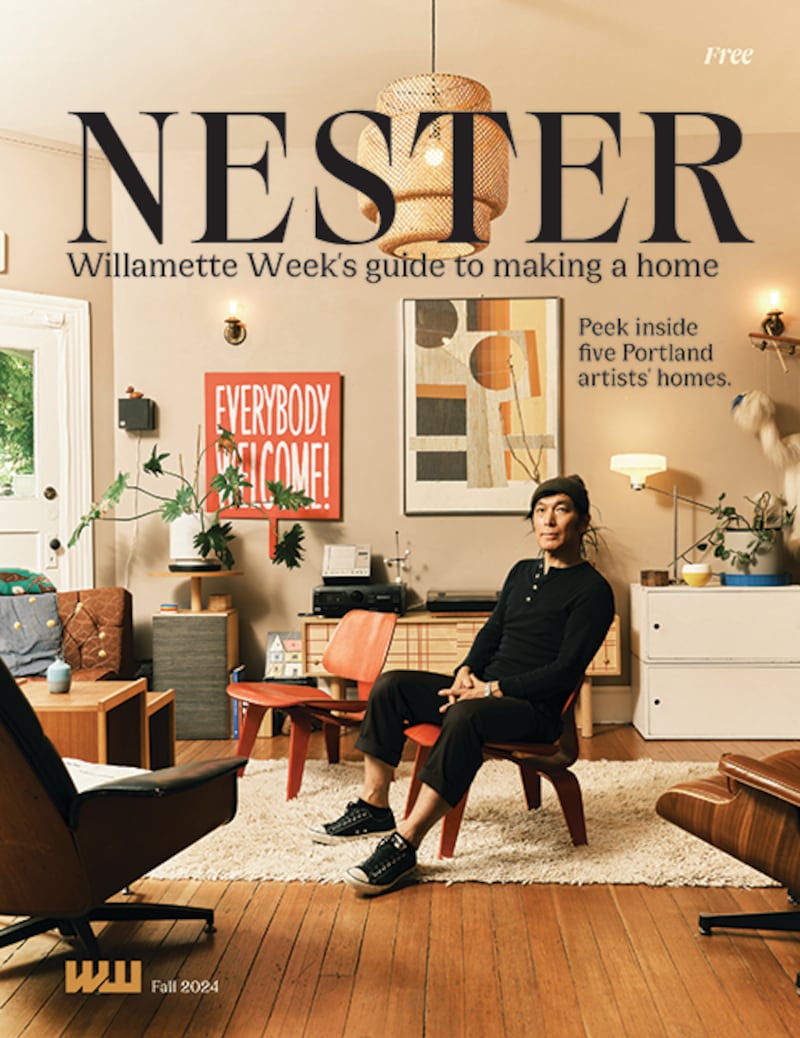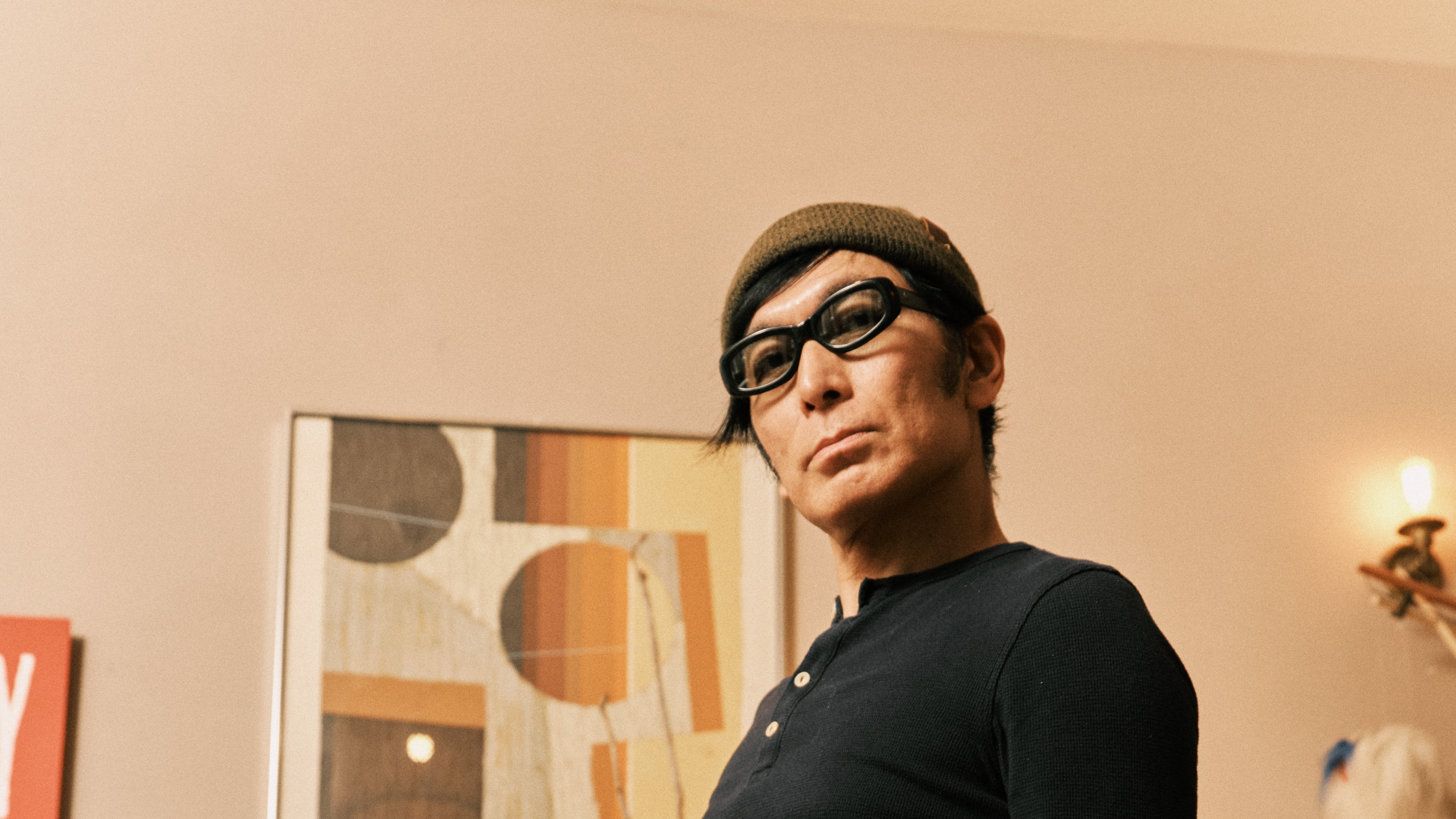Furniture designer and maker Takahiro Moriki’s core philosophy: “My friend made a sticker for me that says: ‘Fun is good,’ Moriki says. “You may be like, I’m stressed out, and sometimes you don’t know how to deal with the stress, but try to have some fun.”
The high-ceilinged 1898 house in the Eliot neighborhood where Moriki lives with his children, 17-year-old Oscar and 13-year-old Elsa, is unquestionably fun. On the main floor, there’s a natural flow, with friendly, colorful details at every turn. Bright paper flowers festoon the stairs leading to the second floor; the walls are lined with posters and drawings; vintage toys peer down from the tops of kitchen cabinets; a china cabinet is packed with collectible McDonald’s and Peanuts glassware. A former vintage-clothing buyer, Moriki has a clear fondness for midcentury modernism and gentle kitsch, but there’s nothing contrived or precious about the home; it looks welcoming and relaxed.
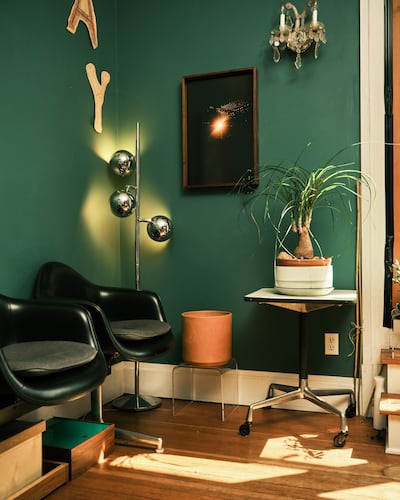
The furniture and home-décor objects Moriki designs also balance minimalist elegance with unexpectedly fun touches. In the living room, there’s a low credenza crisscrossed with bright-red inlaid stripes and a slant-sided cabinet originally made for the clothing store MACHUS; in the dining room, there are plywood risers with spherical feet, stools with red crossbars. Handmade maple and walnut frames, many with colorful acrylic splines at the corners, hold drawings and prints by artist friends.
Moriki’s design process is collaborative: “I design and I build,” he says. “People, clients—they all have ideas. So we work together. I ask, ‘What do you think?’ People who know the things I make [might] say, ‘Whatever you think, just design it.’ But everybody’s picky, so let’s be on the same page.” Functionality is his main goal for the pieces. “The things that I make are the things that I use. When you make things and use them, you can see what would [improve] them. Like, oh, if I shift something this way, it will be easier to use. Some people buy things to display them, but I want to use them.”
Moriki recalls the time he built a maple-wood dining table for friends, delivering it to their house for a 15th anniversary party. “I’m at this big table and we toast—cheers!—and then boom, I spilled red wine. It didn’t leave a stain, but that’s not the point. I love that. Things get spilled on, get scratched, change color, [and] that creates unique characters and personalities in each. I love to see furniture aging. That’s the function and purpose of furniture for me.”
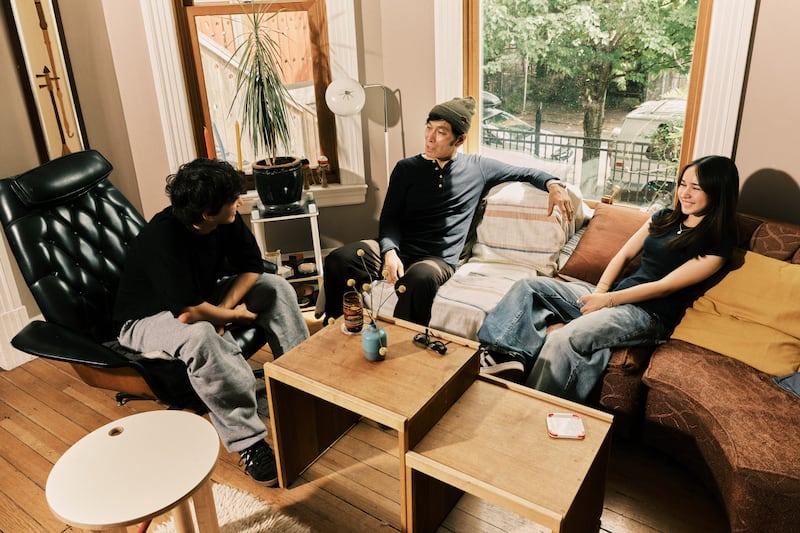
And of a home as well. Five years ago, Moriki began hosting potluck dinners at the house. “I just wanted to eat different kinds of food with interesting, fun, weird, cool people with different cultural backgrounds.” Since then, the dinners have yielded friendships, engagements, business partnerships—and, for the host, a lot of joy.
Moriki grew up in the Japanese city of Kagoshima, but came to Oregon to attend Southwestern Oregon Community College in Coos Bay, spending two years there before transferring to Portland State University. “The reason I chose [SOCC] was that I assumed that there were not many Japanese people or students living there since it’s a small town,” Moriki says. “I thought it would be the best first step to put myself in a non–Japanese-speaking environment, [and be] able to focus on learning the English language.” When he went home to visit his mother and aunt, he recalls, he would bring vintage goods with him. “In my mom’s tiny little garage, I used to do garage sales. I’d tell my friends, hey, I’m going to do this garage sale, can you tell people? And [people] would come and buy everything.” Though he hasn’t been back to Japan recently, a lot of the stuff he’s acquired since moving across the ocean has. “I used to have, like, 2,000 records. I decided I’m not going to buy any more records, so I shipped them to Japan. Now they’re at my mom’s, and she’s like, you have to get rid of these!”
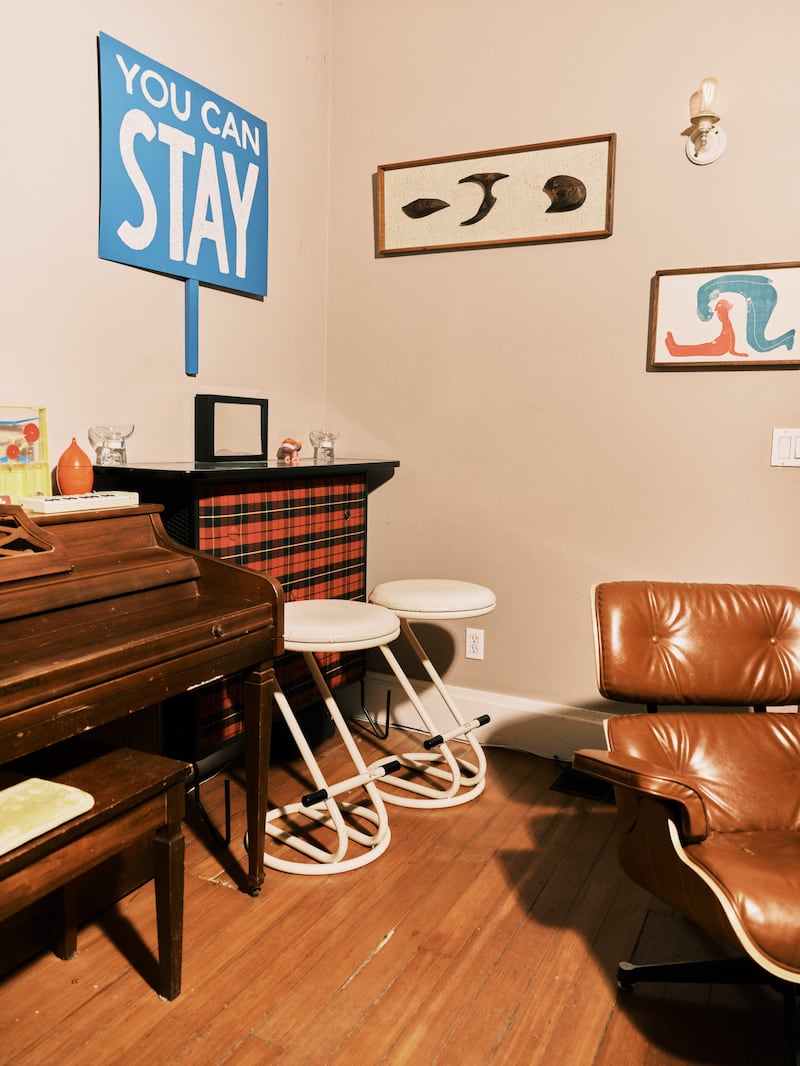
Being able to let go of things—even things he designs—is important to Moriki. In 2006, he built a bulletin board with a traditional Japanese structure at the Portland Japanese Garden. A decade later, it was taken down when the garden was redesigned with an expansion by architect Kengo Kuma, but Moriki values the experience. “It was an amazing opportunity for me to learn more about Japanese design, structure, tools, joinery, history, culture, [and] people.” He doesn’t care if, say, he crafts something for a client and they paint the natural wood, or eventually get rid of it—”do whatever you want!” he says. “Enjoy your thing!” Whether it’s furniture, framing, or potluck dinners, it’s all about living in the moment—especially when the moment is comfortable, functional, and fun.
0 of 14
See more of Takahiro’s work at morikidesign.com.
This story is part of Nester, Willamette Week’s annual home magazine. It is free and can be found all over Portland beginning Monday, Sept. 23, 2024. Find your free copy at one of the locations noted here, before they all get picked up! Or, order one through our store.
